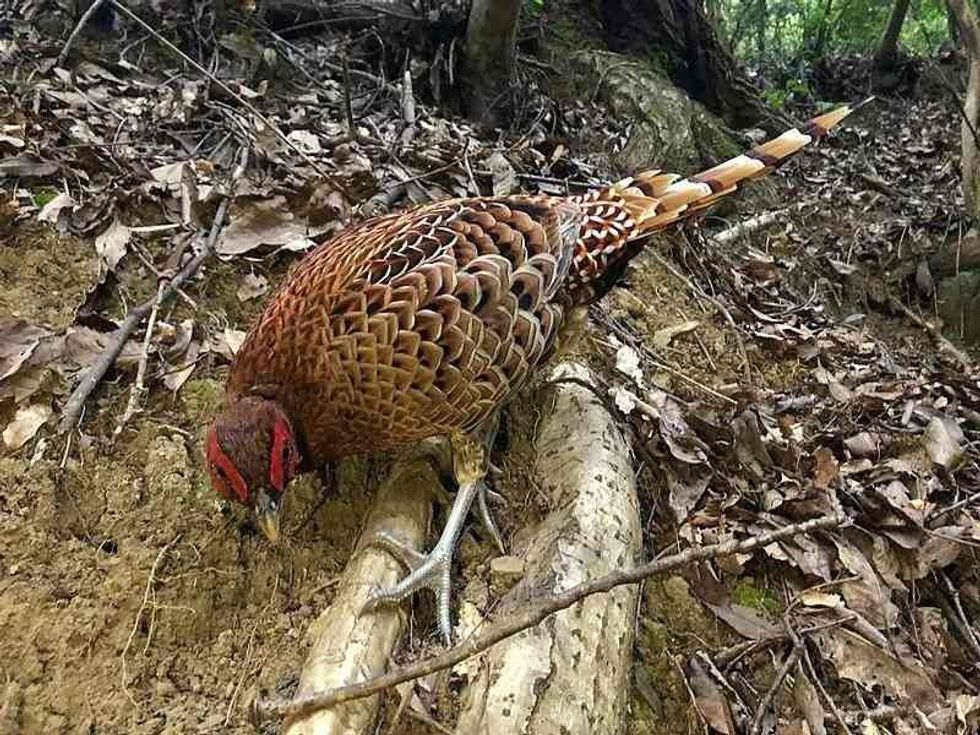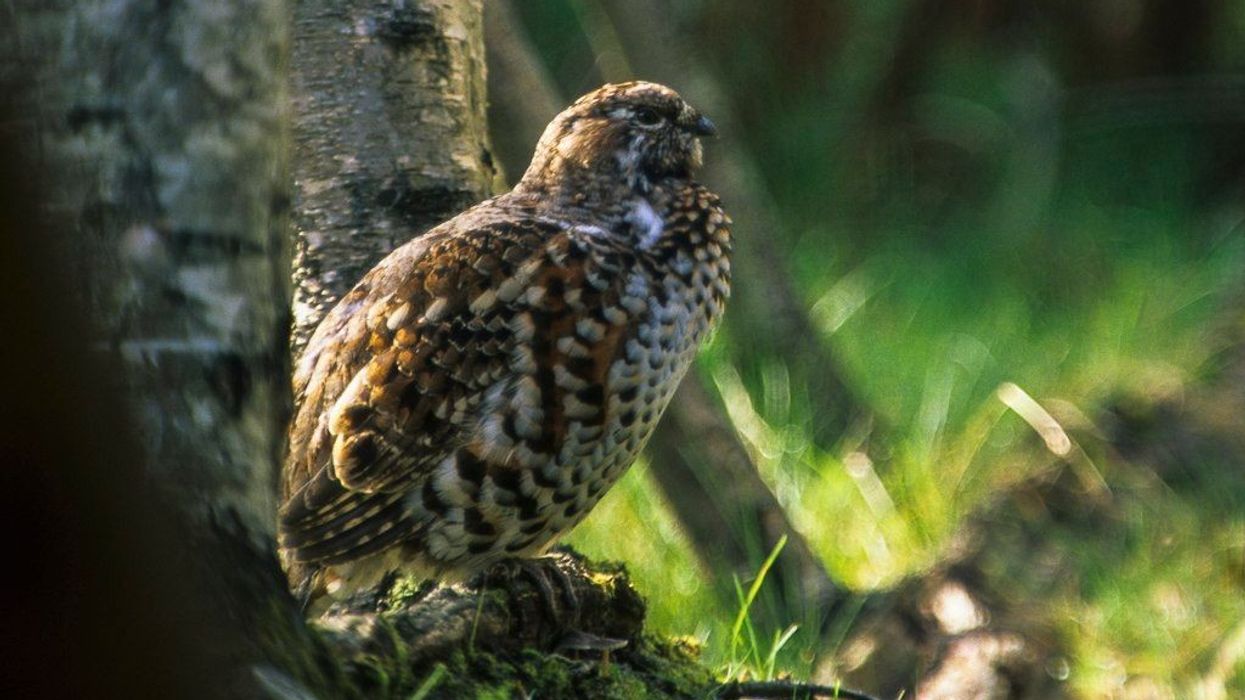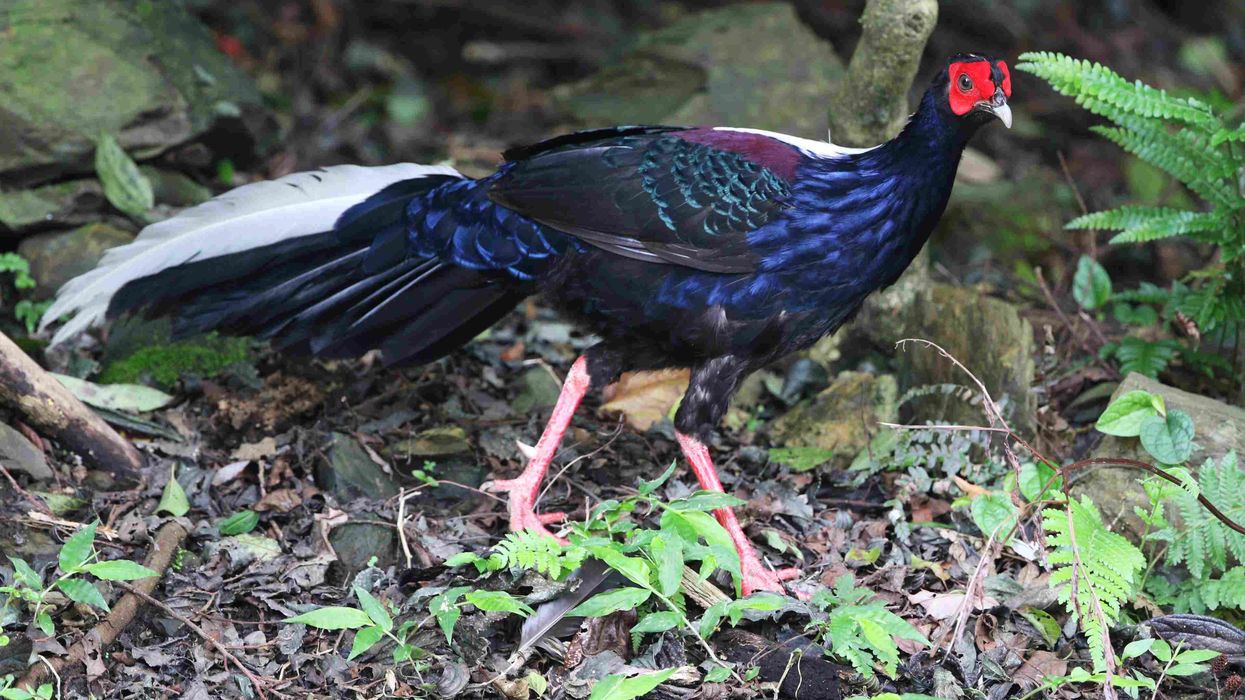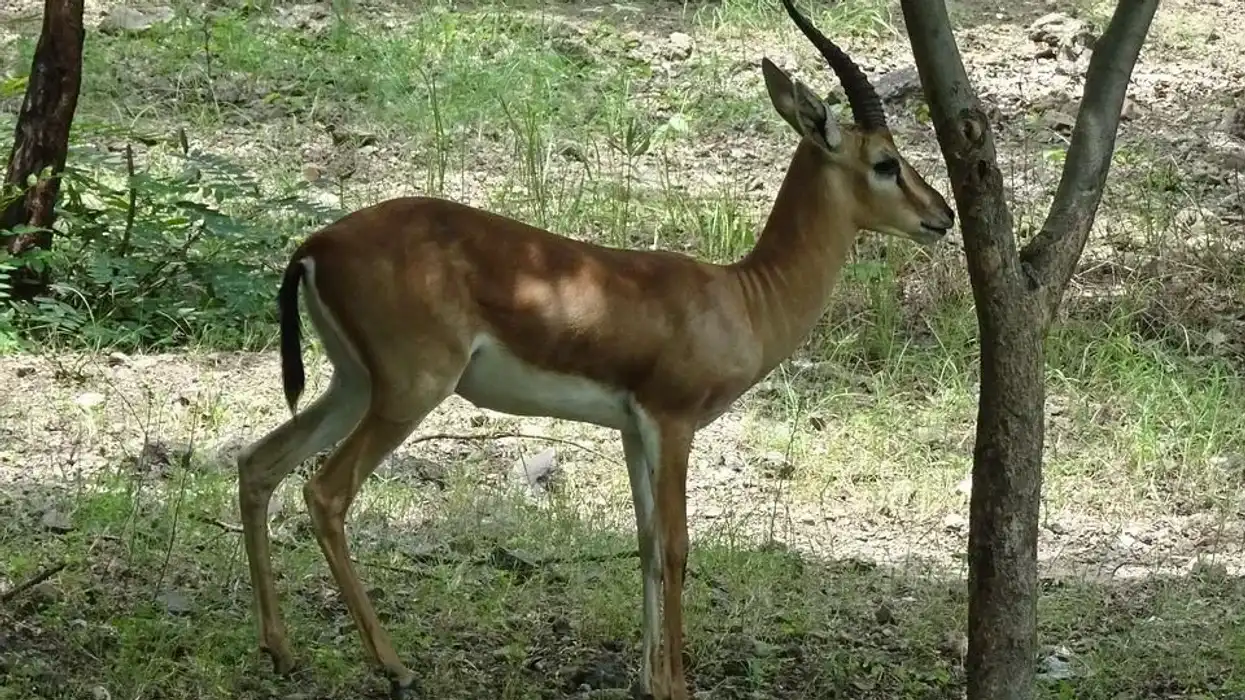The copper pheasant (Syrmaticus soemmerringii) or Soemmerring's pheasant is a landfowl endemic to Japan.
With a copper-brown plumage adorned with beautiful patterns, this bird species is further divided into five subspecies: Syrmaticus soemmerringii soemmerringii (Soemmering's copper pheasant), Syrmaticus soemmerringii scintillans (scintillating copper pheasant), Syrmaticus soemmerringii ijimae (Ijima copper pheasant), Syrmaticus soemmerringii subrufus (Pacific copper pheasant), and Syrmaticus soemmerringii intermedius (Shikoku copper pheasant).
The unique thing about the copper pheasant is that it is native to the mountain forests of the Honshu, Kyushu, and Shikoku islands of Japan. Here, it is most commonly found in heavily wooded areas with dense undergrowth.
It is mainly insectivorous but its diet also includes other plant materials such as roots, leaves, and grains. Though not very vocal, the bird has an indistinct 'ku-ku' call that is heard when it is foraging.
It is one of the most spectacular and showiest pheasant species with elaborate breeding rituals. Unfortunately, its limited range, habitat loss, invasive species, and overhunting in some areas have threatened the copper pheasant population in many areas of its habitat.
Read on to know more about these beautiful Japanese birds with copper-brown feathers!
If you like what you read, do check out some more interesting facts and information about the bobwhite quail and the dove.
Copper Pheasant Interesting Facts
What type of animal is a copper pheasant?
The copper pheasant (Syrmaticus soemmerringii) is a species of ground-feeding bird native to Japan.
What class of animal does a copper pheasant belong to?
Copper pheasants belong to class Aves which includes all birds.
How many copper pheasants are there in the world?
The total population size of copper pheasants is not available.
Where does a copper pheasant live?
The copper pheasant lives in mixed forests with dense undergrowth, especially among dense cypress and cedar forests. They are commonly found in deep coniferous forests with streams or gullies close by. The species is also found in villages and at forest edges.
What is a copper pheasant's habitat?
The copper pheasant's habitat is restricted to the Honshu, Kyushu, and Shikoku islands of Japan. Although these beautiful birds are most common in dense coniferous forests of cedar and cypress trees, the Ijima subspecies are more frequently encountered in Kyushu's evergreen and deciduous broadleaf forests.
These birds prefer roosting in pine trees on steep slopes. Regardless of the local variation in habitat, these pheasants are always found at elevations of less than 5900 ft (1800 m).
Who do copper pheasants live with?
Copper pheasants have been observed in pairs as well as groups consisting of up to six individuals. Group sightings are relatively rare.
How long does a copper pheasant live?
The exact lifespan of the copper pheasant is not available.
How do they reproduce?
Copper pheasants were once thought to be monogamous, but recent studies have identified the species to be polygamous. The copper pheasant breeding season occurs around April and May and the breeding nest of the bird is built on the ground, usually sheltered by a fallen tree or in the grasslands at the edge of forests.
After breeding, the female is known to lay a clutch of between six and 13 eggs, all cream-colored or uniformly light tan.
The female incubates the eggs for a full 24-25 days, and the chicks are born with chestnut and yellowish buff down. The young birds fledge about two weeks after hatching and grow to almost their full size within half a year.
What is their conservation status?
According to a 2016 assessment by the International Union for Conservation of Nature (IUCN) Red List of Threatened Species, these copper pheasants of Japan are Near Threatened.
Copper Pheasant Fun Facts
What do copper pheasants look like?
The plumage color of the copper pheasant varies with the subspecies. In general, male birds have red facial skin with rich coppery reddish-brown feathers on their head. The neck and mantle are paler.
The breast is pale chestnut and becomes paler in areas around the flanks and the belly. The tail is long, with black, white, and chestnut lateral bars along its length. The flight feathers have blackish-brown and there are buff bars.
The eyes are brown, and the legs and feet are gray. The gray legs of the male have short spurs, but the female is devoid of these. In addition, male birds have a prominent red patch of skin around their eyes.
In contrast to the male, the female bird is less showy with predominantly brown plumage. The upper parts have grayish-brown feathers, and those below are buff-colored with dark bars. A female copper pheasant tail is much shorter and not as long as that of a male bird.

How cute are they?
Unlike the Argus pheasant, these birds cannot really be called cute. Male birds look pretty spectacular and elegant with their dark, rich reddish-brown and barred feathers that seem to give off a metallic sheen.
How do they communicate?
Just like the golden pheasant, the copper pheasant is not a very loud bird species. Their typical call is mainly a croaky and indistinct 'ku-ku' call. The long-tailed male birds make a wing-whirring sound during the breeding season or to intimidate any approaching enemy.
How big is a copper pheasant?
Copper pheasant males measure about 2.8-4.5 ft (87.5-136 cm) with a tail length well between 1.6-3.2 ft (48-98 cm). Females are smaller and measure 1.7-1.8 ft (51-54 cm) with a tail length of about 0.5-0.6 ft (14-19 cm). These birds are significantly larger than the common pheasant (Phasianus colchicus).
How fast can a copper pheasant fly?
Pheasants, in general, are short-distance fliers and they will burst upwards with great speed when startled. When chased, these birds can fly up to 60 mph (96 kph) for short distances. However, they mainly prefer to run and can reach speeds of 8-10 mph (13-16 kph).
How much does a copper pheasant weigh?
While males have a weight range of 2-3 lb (943-1348 g), females weigh less, at etween 1.6-2.2 lb (745-1000 g).
What are the male and female names of the species?
The male is called a 'cock', and the female is known as a 'hen'.
What would you call a baby copper pheasant?
A baby pheasant is known as a 'chick'.
What do they eat?
These pheasants have an omnivorous diet that mainly includes seeds, acorns, leaves, and roots foraged from forest grounds. Besides, these birds are also known to consume insects, worms, earthworms, and even small crabs. The diet of young birds primarily consists of animal matter as well as leaves and grains.
Are they poisonous?
The copper pheasant is not known to be poisonous.
Would they make a good pet?
While pheasants make excellent pets and can be a colorful addition to aviaries, the copper pheasant is a Near Threatened species so it is not advisable to keep them as pets or as domestic fowl.
Did you know...
In Japan, the copper pheasant is known as Yamadori. It even appears in Japanese poetry dating back to the early eighth century.
The five subspecies of the copper pheasant have distinct geographical distributions.
While the Soemmering's copper pheasant (nominate subspecies) is from northern and central Kyushu, the Ijima copper pheasant is from southeast Kyushu, the scintillating copper pheasant is from central and northern Honshu, the Pacific copper pheasant is from southwest Shikoku and southeast Honshu, and the Shikoku copper pheasant is from southwest Honshu and Shikoku.
The Ijima copper pheasant is similar to the Soemmeringii, but the latter has a white rump.
Why are copper pheasants also called Soemmerring's pheasants?
The copper pheasant is also called Soemmerring's pheasant after the German scientist Samuel Thomas von Sömmerring. Even the bird's scientific name commemorates the same individual.
What's the difference between a copper pheasant and ringneck pheasant?
While males of both pheasant species are more brightly colored than their female counterparts, some stark differences exist in the physical appearances of these birds.
The copper pheasant has feathers that are reddish-brown on its head, and the ring-neck pheasant's head is covered in glossy dark green to lustrous purple feathers. Besides, many subspecies of the ring-neck pheasant have a prominent white collar around their neck, giving them their typical name.
In addition, while the Near Threatened copper pheasant prefers dense forests, the ring-neck Pheasant is of Least Concern (according to the IUCN) and is more likely to be found in open habitats such as grasslands and farms.
Here at Kidadl, we have carefully created lots of interesting family-friendly animal facts for everyone to discover! Learn more about some other birds from our Toco toucan facts and birds-of-paradise facts pages.
You can even occupy yourself at home by coloring in one of our free printable copper pheasant coloring pages.










